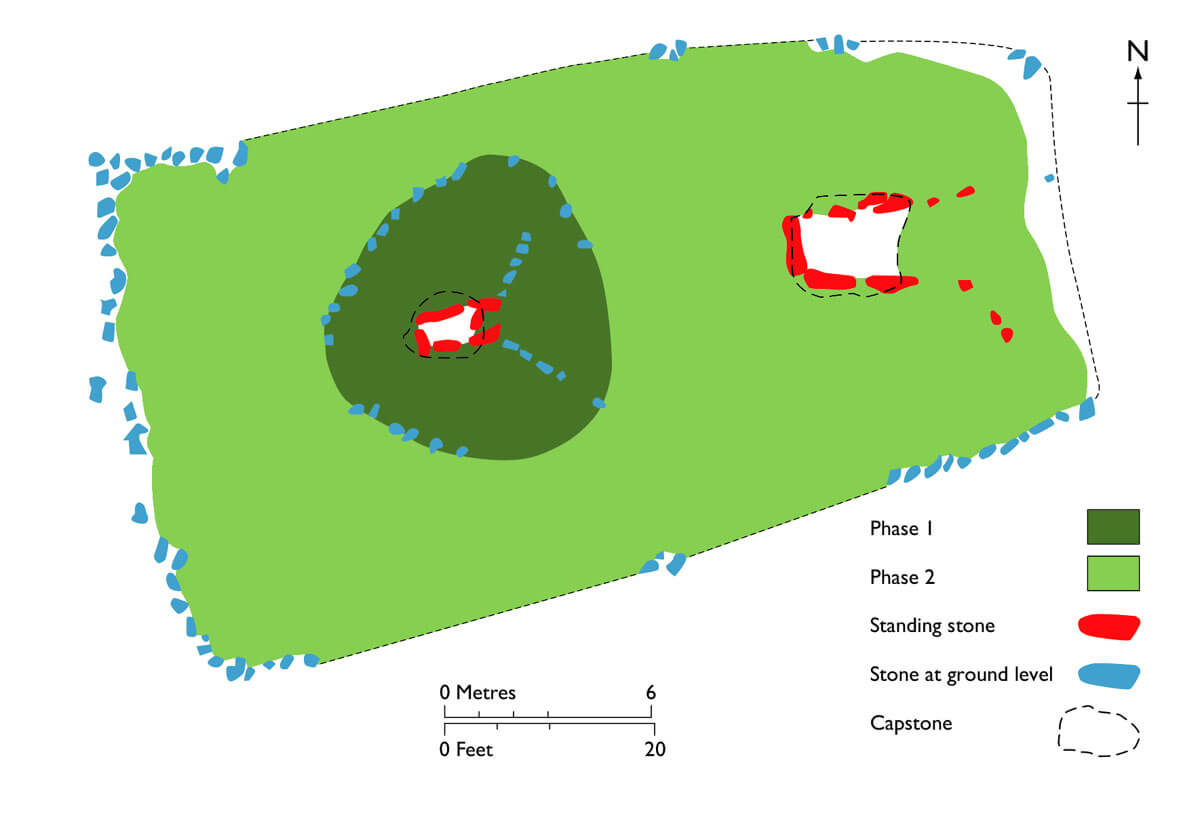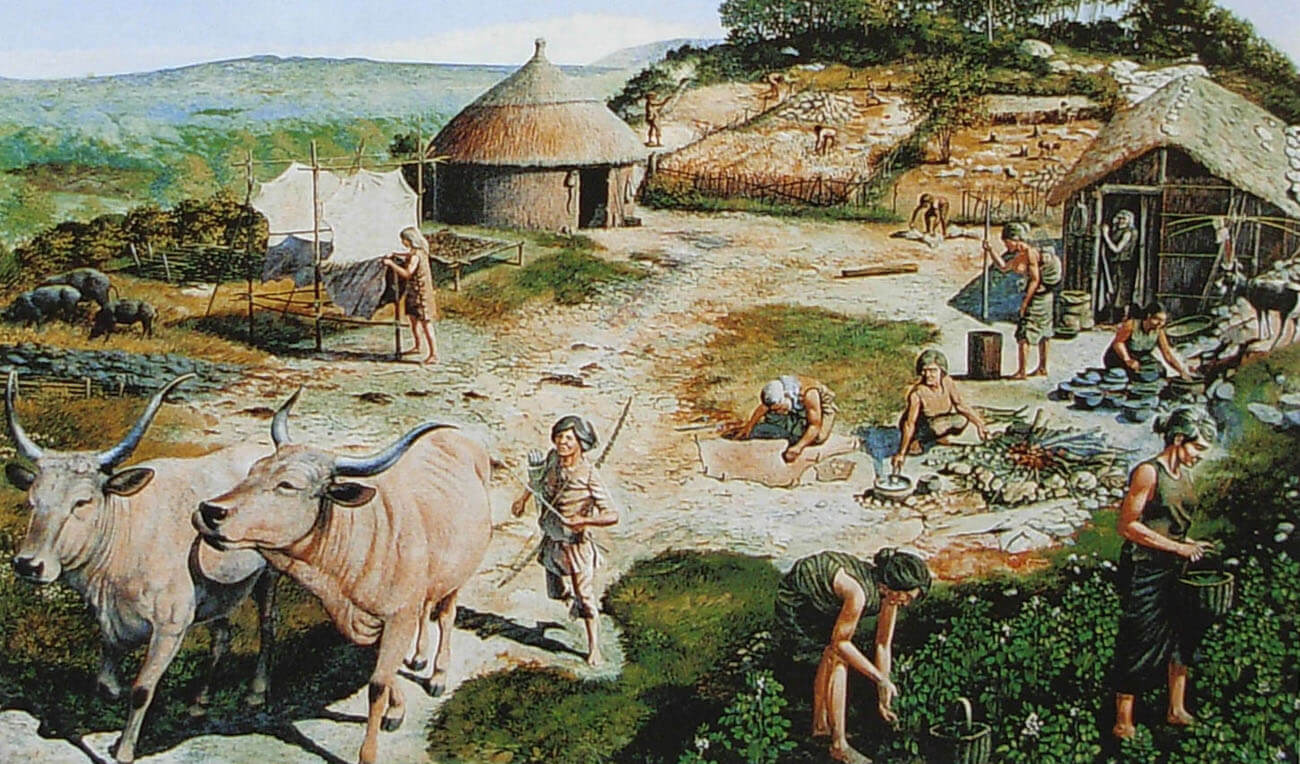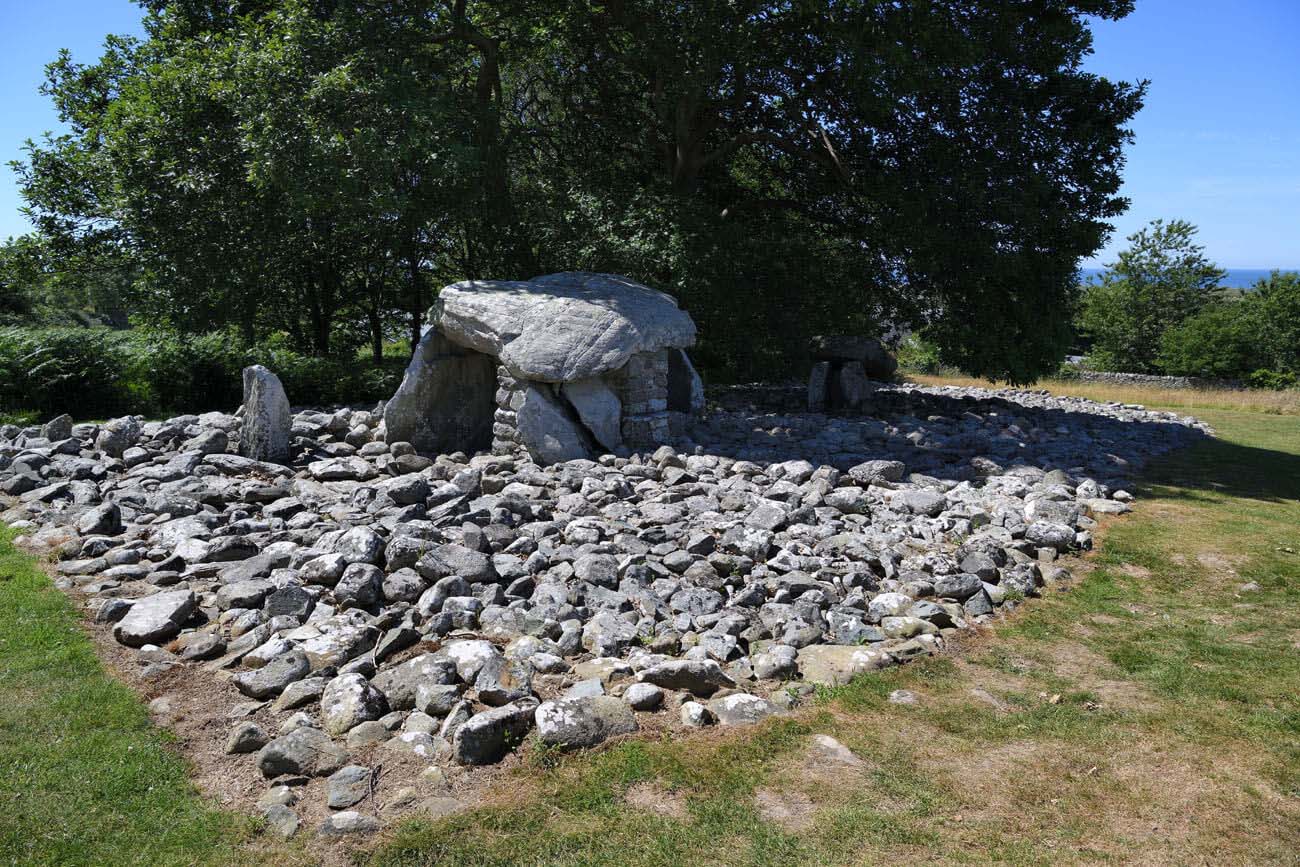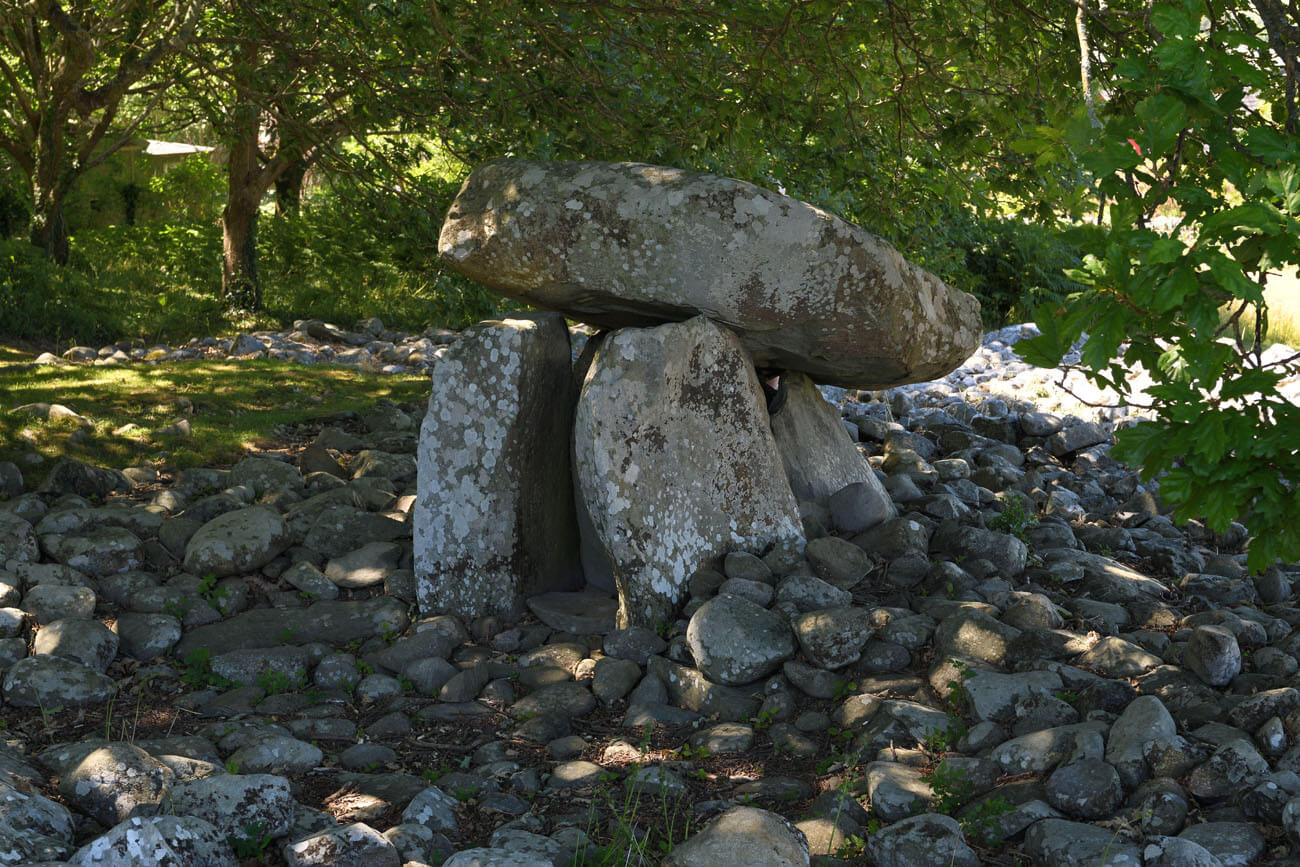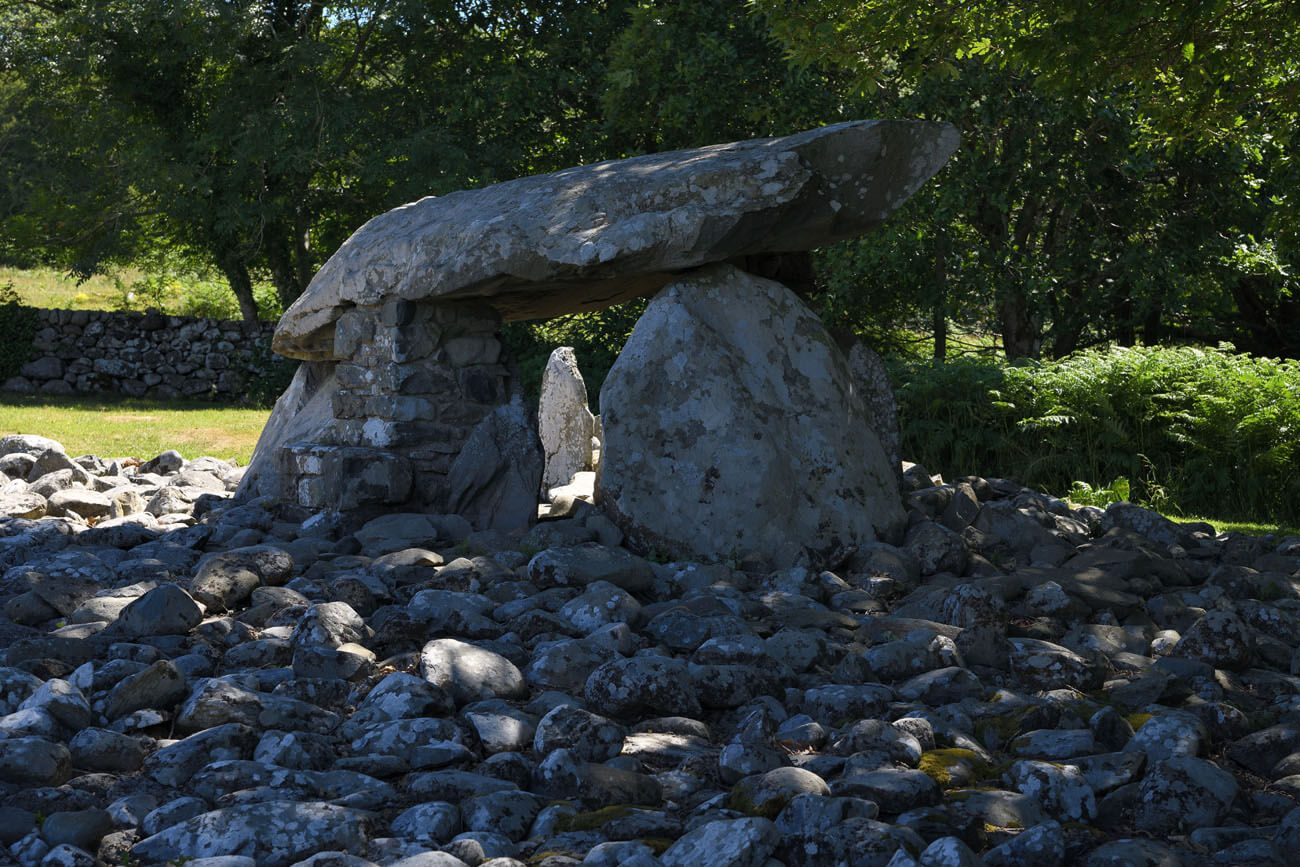History
The double tomb at Dyffryn Ardudwy was built in the Neolithic period, likely between 3000 and 1900 BC, as a communal burial site for an early agricultural community. Construction was carried out in two stages. First, a smaller western chamber was constructed, followed by a larger eastern chamber in the second half of the Neolithic period. The older chamber was likely still in use during the expansion and was additionally decorated with carvings characteristic of late Neolithic passage tombs. In the Early Bronze Age, the eastern chamber may have been reused for further burials.
Architecture
The tomb, in its final form, consisted of two chambers built on the gently slope of Moelfre Hill, overlooking the sea to the west. It were covered by a trapezoidal cairn of earth and stones, orientated east-west, with the edge lined with larger kerb stones to stabilize the structure and prevent the scattering of the mound material. The western chamber had been built earlier. Initially, it was covered by a small cairn, at least 6 meters in diameter, roughly triangular or kidney-shaped with rounded corners. After the construction of the eastern chamber, the western chamber was absorbed by the new structure, creating the aforementioned trapezoidal quadrangle measuring 28 x 15 meters.
The older western chamber was roughly rectangular in shape, 2.5 meters long, 1 meter wide, and 2 meters high. It consisted of six stones forming the walls, and its entrance was blocked by two additional portal stones. The roof consisted of a large, flat stone measuring 2.6 x 1.8 meters, over which the entire chamber was covered with a mound of small pebbles. A pit was dug in front of the entrance, in which several smaller flat stones were placed, and burial offerings in the form of ceramic vessels were placed. At least one of the boulders comprising the burial chamber was originally covered with carvings, creating primarily rectilinear patterns (chevrons, one rhombus) and punctured, notch-like patterns.
The newer eastern chamber was located approximately 10 meters from the older one. It was larger, measuring 3.6 x 2.4 meters and 1.5 meters high, and had a shape similar to a regular quadrangle. Its upper capstone, measuring 3.2 x 2.7 meters, was supported by at least six boulders: one to the west, two to the south, and three slightly smaller to the north. The entrance was located, as in the older chamber, on the eastern side. In front of it there could have been a kind of vestibule or forecourt for performing rituals.
Current state
Elements of the monument, which have survived to this day, are an earlier, small dolmen on the west side, consisting of six vertical stones and a capstone slab placed on top, and a second, larger tomb built in the east with six visible stones and one on the top, protected against collapse by embedded stones on the one side. The cairn of the tomb has been diffused and only a part of the stones scattered around are visible. In 2008, faint remains of Neolithic carvings were discovered on the northern face of the southern stone of the western chamber.
bibliography:
Castleden R., Neolithic Britain: New Stone Age sites of England, Scotland and Wales, London 1992.
Haslam R., Orbach J., Voelcker A., The buildings of Wales, Gwynedd, London 2009.
Nash G., Stanford A., New megalithic art at the Neolithic chambered monument of Dyffryn Ardudwy, north Wales, “Rock Art Research”, Volume 26, Number 1/2009.
The Royal Commission on The Ancient and Historical Monuments and Constructions in Wales and Monmouthshire. An Inventory of the Ancient Monuments in Wales and Monmouthshire. County of Merioneth, London 1921.

